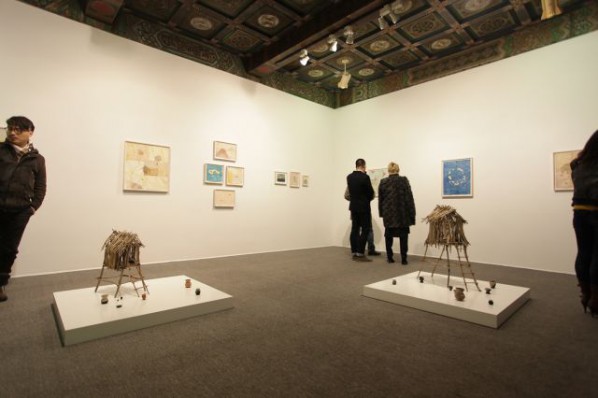
Fumito Urabe's a passage of ancient red rice suggests an epic historical journey. Using found or discarded materials, Urabe constructs small boats made out bits of driftwood and creates map-like mixed media works on paper of imaginary islands drawn with mineral pigments. Featured in this exhibition will be two of Urabe's small-scale dioramas of shanty huts accompanied by miniature ceramic pots. Also on view will be a group of crude driftwood sail boats suspended in mid-air. Commenting on his own work Urabe says, “I depict the places and subjects that belong to no one . . . the world without the owner is also a place that everyone holds. Things are owned only momentarily by human beings—the land, objects, even our own bodies: nothing belongs to us forever. The found objects I collect indicate this truth; I live a moment of forever when I relate to those mediums.” Sekihan (赤飯 or red rice) is ceremonial rice. The rice of ancient Japan had a naturally reddish color and was intimately connected to spiritual beliefs long ago, often given as an offering to the gods. While Urabe's title for his exhibition might reference these ideas, his passage of ancient red rice might well serve as a metaphor for Buddhist tales he learned as a child. “Buddha's teachings seem far from me,” says Urabe, who is the son of a Buddhist monk. “Living in contemporary society it is not possible to live without trying to possess or to take. Making work is an act of self observation. As in Buddhist scripture, where a mirror is often compared to the mind, my work is also a reflection in a mirror.”

About the exhibition
Dates: Jan 11, 2014 - Mar 2, 2014
Opening: Jan 11, 2014, 18:00, Saturday
Venue: James Cohan Gallery
Courtesy of the artist and James Cohan Gallery.




























